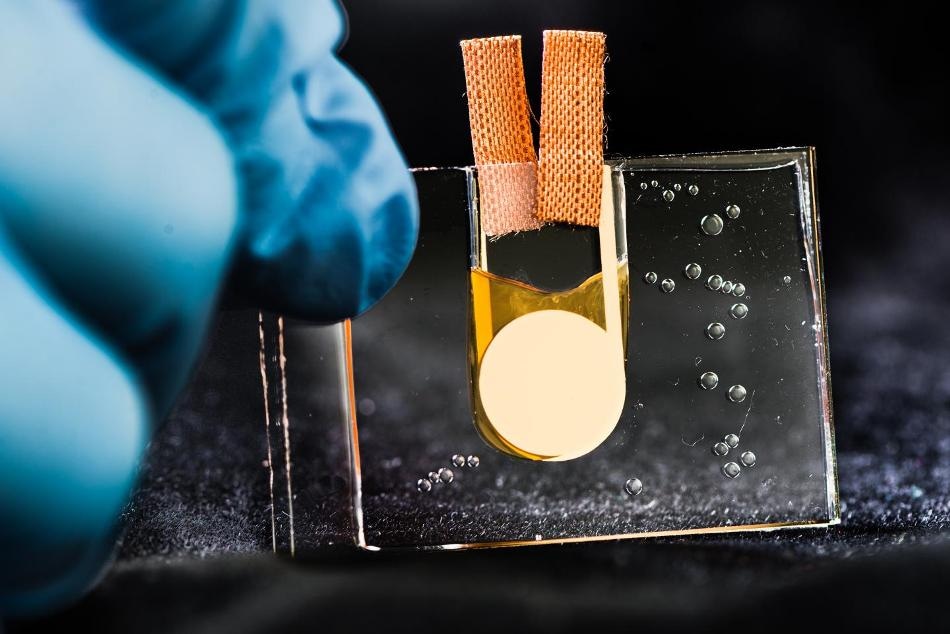Feb 1 2017
 This is the heat driven transistor on Laboratory of organic electronics, Linkoping University. Credit: Thor Balkhed
This is the heat driven transistor on Laboratory of organic electronics, Linkoping University. Credit: Thor Balkhed
A thermoelectric organic transistor has been developed by Dan Zhao and Simone Fabiano at the Laboratory of Organic Electronics, Linköping University. A temperature rise of a single degree is more than enough to cause a detectable current modulation in the transistor.
The results are featured in Nature Communications.
We are the first in the world to present a logic circuit, in this case a transistor, that is controlled by a heat signal instead of an electrical signal.
Professor Xavier Crispin, Laboratory of Organic Electronics, Linköping University
The heat-driven transistor opens the possibility for several new applications such as identifying small temperature differences, and using functional medical dressings where the healing process can be controlled.
Circuits controlled by the heat present in infrared light can also be produced for use in heat cameras and various other applications. The high sensitivity to heat, 100 times greater than standard thermoelectric materials, highlights that a single connector from the heat-sensitive electrolyte, which behaves as a sensor, to the transistor circuit is sufficient. It is possible to combine one sensor with one transistor to develop a “smart pixel”.
It is further possible to use a matrix of smart pixels, for instance, instead of the sensors that are currently used to detect infrared radiation in heat cameras. With additional developments, this new technology can enable a new heat camera in a mobile phone at a low cost, since the materials needed are not hazardous, rare or expensive.
The heat-driven transistor builds on research that resulted in the development of a supercapacitor a year ago, charged by the rays from the sun. Heat is converted to electricity in the capacitor, and this heat can further be stored in the capacitor until it is required.
The researchers at the Laboratory of Organic Electronics developed a liquid electrolyte with a 100 times increased ability to transform temperature gradient to electric voltage than the electrolytes earlier used. The liquid electrolyte consists of ions and conducting polymer molecules.
The positively charged ions move rapidly and are small, while the negatively charged polymer molecules are heavy and large. The small ions travel rapidly towards the cold side, resulting in a voltage difference, when one side is heated.
When we had shown that the capacitor worked, we started to look for other applications of the new electrolyte.
Professor Xavier Crispin, Laboratory of Organic Electronics, Linköping University
Dan Zhao, principal research engineer, and Simone Fabiano, senior lecturer, have demonstrated, after several hours in the laboratory, that it is completely possible to develop electronic circuits that are monitored by a heat signal.
The Knut and Alice Wallenberg Foundation financed the research as part of the “Tail of the sun” project since 2014.